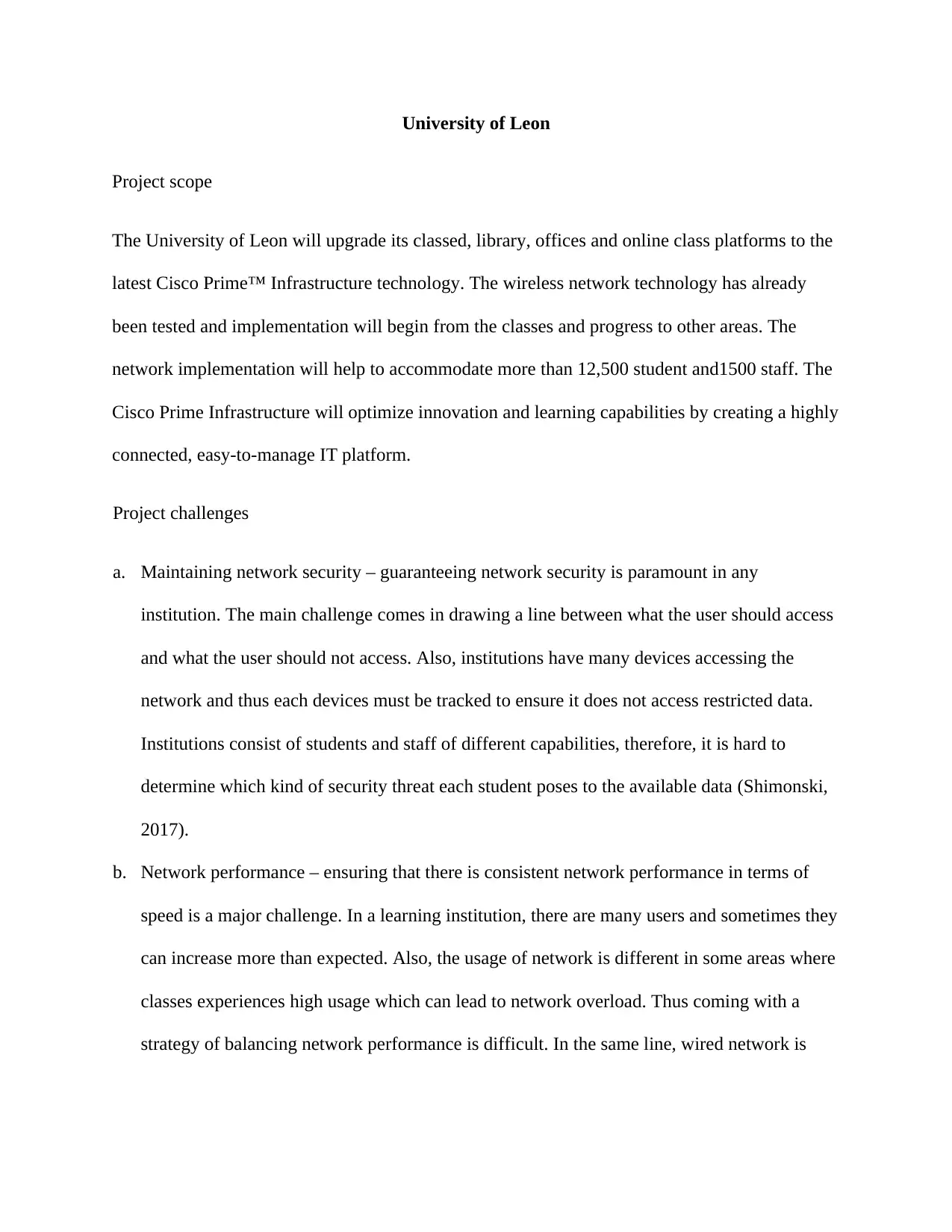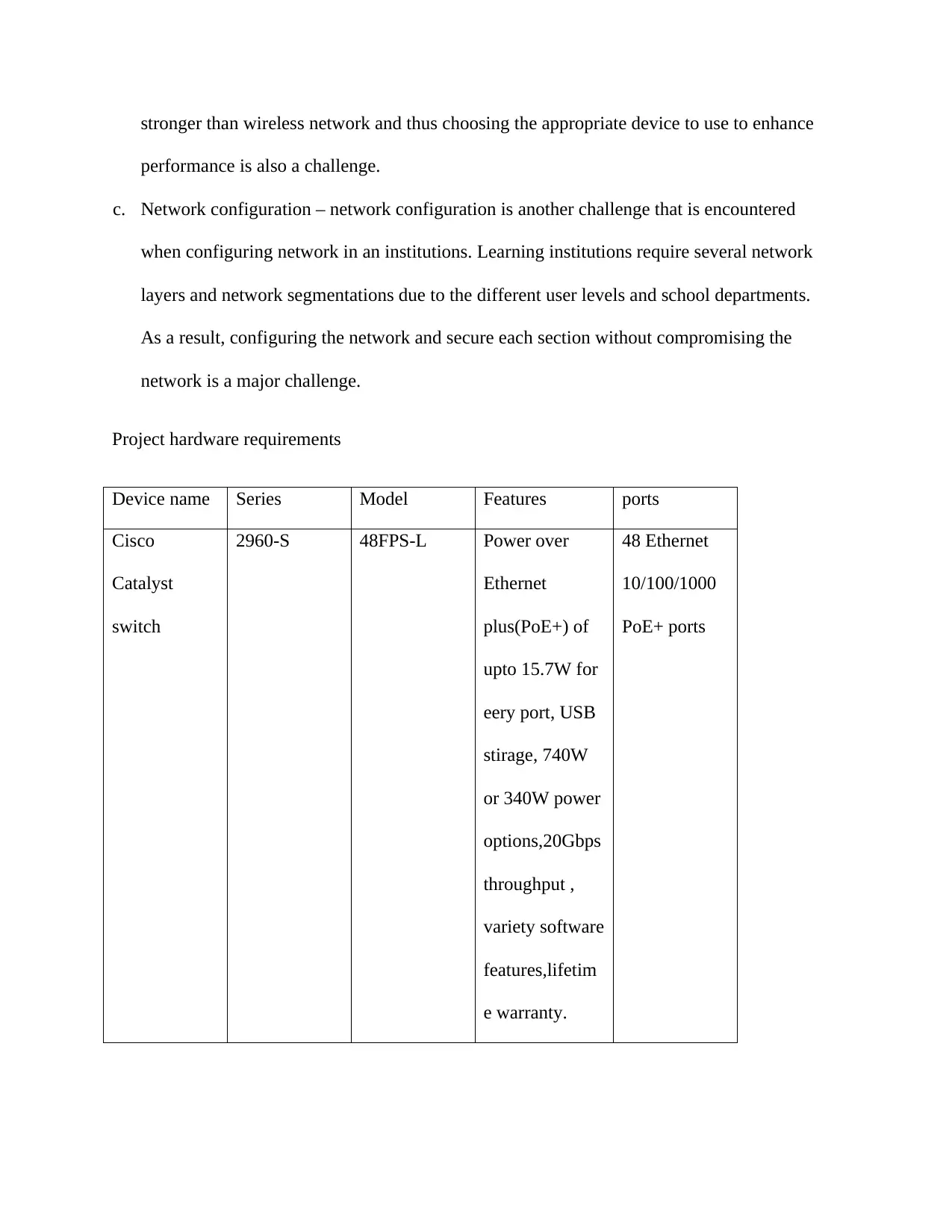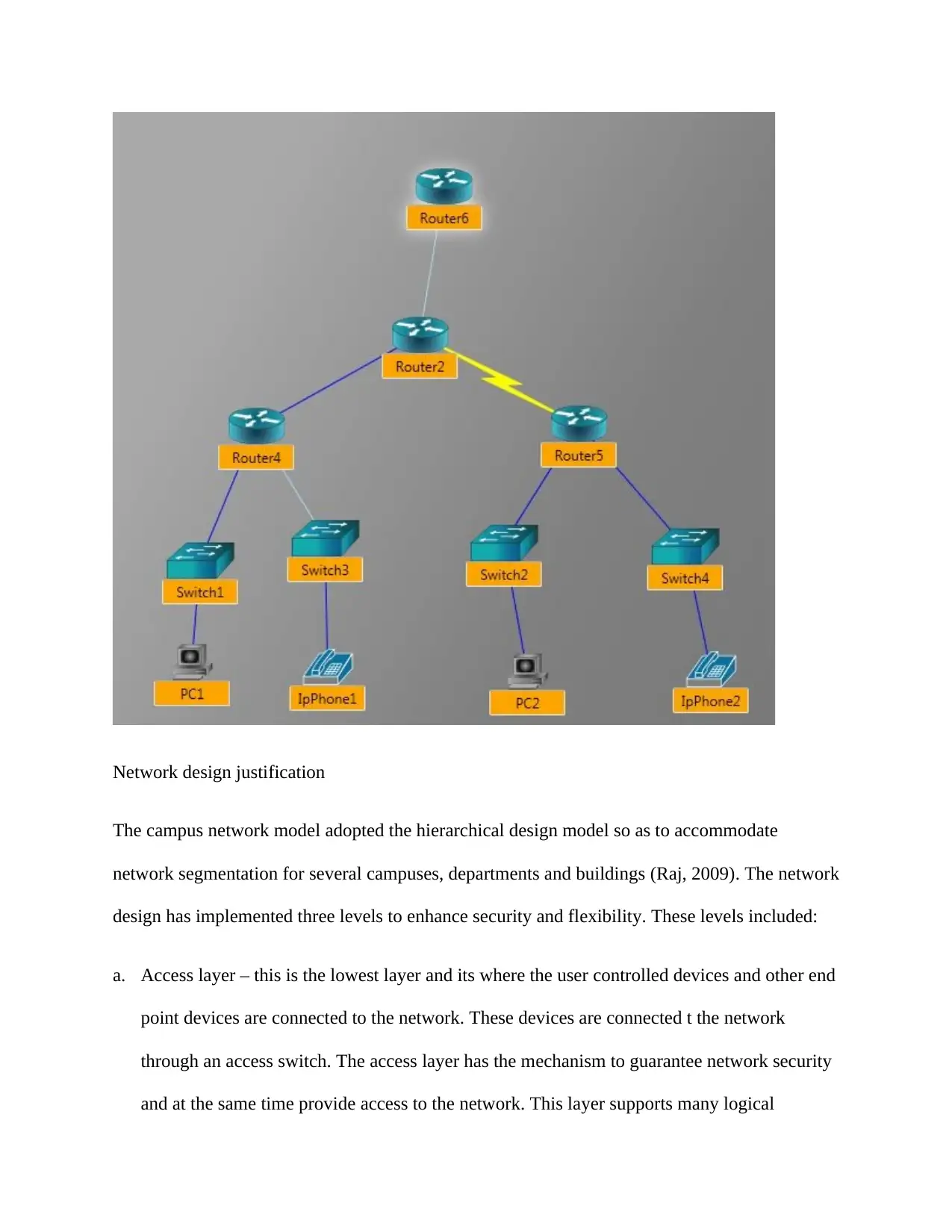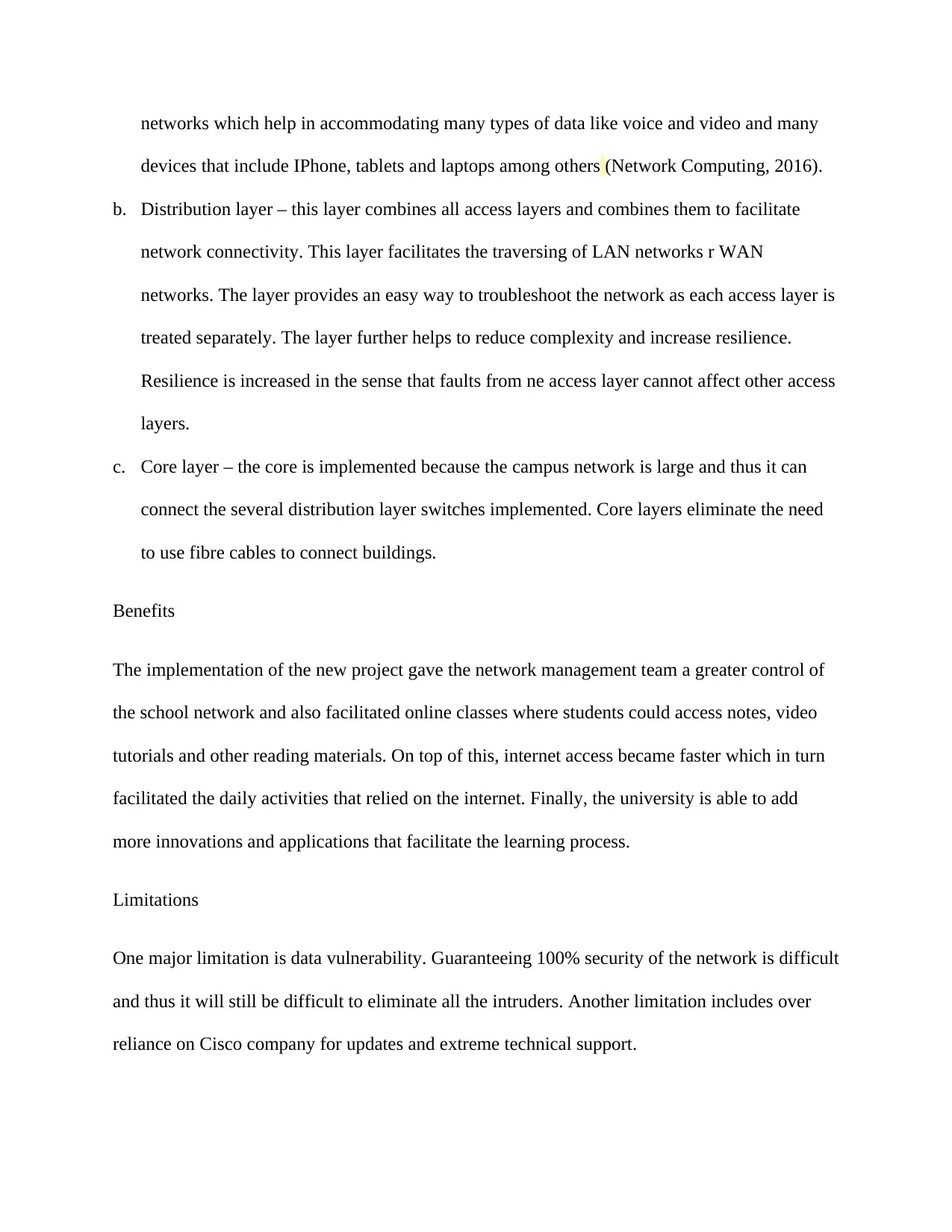Cisco Prime Infrastructure Network Implementation
VerifiedAdded on 2020/02/05
|7
|971
|318
Essay
AI Summary
This assignment analyzes the implementation of Cisco Prime™ Infrastructure at the University of Leon, focusing on its project scope, challenges, hardware requirements, and network design. It examines the benefits and limitations of this technology, emphasizing improved network management and flexibility despite security concerns and reliance on Cisco for support.
Contribute Materials
Your contribution can guide someone’s learning journey. Share your
documents today.
1 out of 7













![[object Object]](/_next/static/media/star-bottom.7253800d.svg)